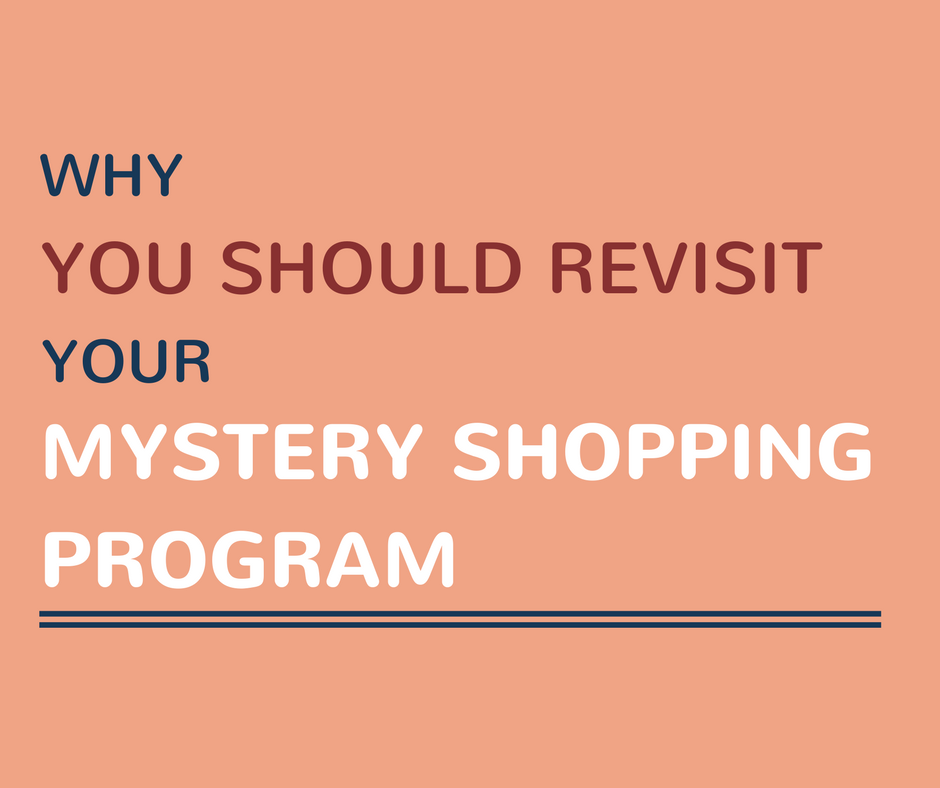Transforming CX: How Mystery Shopping, Feedback Survey, and Reputation Management Work Together
It's a common misconception that Mystery Shopping, Customer Feedback Surveys, and Reputation Management all deliver the same insights into the...
3 min read
Sumit Mundra
June 17, 2021

Great customer experiences lead to lifetime loyalty. A positive experience will keep customers coming back for more, whereas a negative one can lose them for good. Understanding how your brand is perceived has never been more critical.
Examining your business through the customer’s lens brings a fresh perspective and creates a customer-centric culture at the heart of your business. While both Mystery Shopping and Operational Audits can help you get there, there are key differences between each approach to consider. Read on to better understand what these programs are and uncover how they can benefit your business in their own unique ways.
Let's dig in!
Imagine customers walking into your stores - making purchases, engaging with store associates, interacting throughout the customer journey - and then reporting their unbiased feedback on your brand performance for you to analyze. This art of assessing your business from the customers' perspective is the core of Mystery Shopping.
In another scenario, imagine someone evaluating and comparing the level of health and safety delivered against your brand standards. Later, sharing their objective, accurate feedback to pinpoint areas for improvement and highlight opportunities for better alignment with these standards. This technique of turning operational blindspots into opportunities with the help of a thorough on-site inspection is the essence of Operational Audits.
Both services drive toward the same goal: improving customers' experience while going about it completely differently.

Have you ever heard of the term ‘covert operations’ in spy movies? Similarly, mystery shoppers stay in stealth mode and portray themselves as real customers to measure service quality. That's why Mystery Shopping is also called Covert Evaluation.
Conversely, auditors need to reveal their identity during an on-site inspection, whether conducting a scheduled or unscheduled operational audit. Because they have to work in tandem with on-site staff, operational audits are also known as Overt Evaluations.

As Mystery Shoppers are working under the guise of being everyday customers, their access is limited to that of regular customers. For example, they can report on the availability of a particular product, hygiene, and cleanliness in washrooms, or whether identification is being requested for the sale of age-restricted products.
However, because auditors and their purpose is known to staff, they are able to access areas off-limits to the public and act in ways that would be odd for a normal customer. For example, they can ask about inventory counts, ensure the use of proper signage, or an employee's adherence to standard operating procedures without arousing suspicion. In this way, mystery shoppers are able to collect more candid data, whereas auditors can collect more extensive data.

Mystery Shopping is the right program if you need competitive intelligence and want to gain an advantage over your competitors. Shoppers can visit competitors' locations unnoticed to gather intel on the value proposition and components of customer experience they emphasize more.
In contrast, no competitor would grant an auditor working for you to enter and inspect their operations. Thus, brands go for Mystery shopping services when they want to know their competitors well.

As established above, Mystery Shopping and Operational Audits address different pain points to improve customer experience. Some companies seek to set up their own in-house audit teams and mystery shoppers to evaluate their business.
However, outsourcing these initiatives to specialized teams eliminates internal biases, avoids additional costs associated with maintaining your teams, such as travel and training, and ensures assessors who are supposed to be incognito go unnoticed by employees.
External Auditors and Mystery Shoppers have no vested interest in the outcome of their visit. This makes their findings inherently more objective than internal team members. They are also recruited and managed by an external team, removing this cost and burden from your own. For these reasons, many companies prefer to outsource their Operational Audit and Mystery Shopping programs.
It’s important to remember that Mystery Shopping and Operational Audits are not mutually exclusive. Many companies often take a hybrid approach to get the unique customer perspectives and staff consistency in implementing brand standards across locations. Together, they offer a complete, holistic approach to improve customer experience through authentic, unbiased feedback. Interesting, isn't it? Dig a little deeper on Why You Need A Blended Approach To CEM.

It's a common misconception that Mystery Shopping, Customer Feedback Surveys, and Reputation Management all deliver the same insights into the...

When running a mystery shopping program at your business, sometimes it can feel like all it requires is simply putting a program in place, and then...

Once upon a time, pizza ruled delivery. Back in the 1950s, a small family shop in Los Angeles started offering free delivery, setting the stage for...